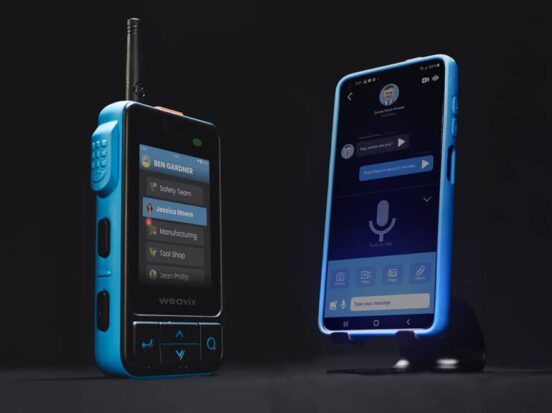Digital transformation has the potential to connect your entire workforce for deeper productivity insights, higher efficiency, and greater revenue. According to McKinsey, digital transformation leaders in industries like manufacturing, construction, and oil and gas generate 2.3x the compound annual growth rate as laggards.
However, creating a digital transformation budget has often been a challenge for organizations. The high costs of digital adoption keep some facilities from getting initiatives off the ground, while other company’s projects fall flat due to a lack of appropriate investment.
Budgets for digital transformation are not something to take lightly. At a minimum, they need to be specific and realistic enough to solve your key challenges. Any plan you make must also be sensitive to capital expenditures (CapEx) and operational expenses (OpEx), so that you can quickly adapt to any unforeseen changes in implementation and ongoing management.
In general, budgeting is no easy feat, and budgeting for something as important as digital transformation can be a real struggle. Only when you understand your company’s digital transformation goals can you plan for long-term success.
Key highlights:
- A digital transformation budget requires careful planning to align with your company’s goals while allowing flexibility for unexpected costs
- Your organization’s timeline and scope of digital transformation will impact its budget and overall success
- The Walt Smart Radio System by weavix offers an OpEx model with managed services to keep digital transformation budgets predictable and cost-effective
Identify Everything Affecting Your Digital Transformation Costs
The ideal digital transformation project should improve every aspect of your operations. And that means budgeting for these projects cannot be restricted to only one location or department. On this note, it’s important to identify everything affecting your budget, so you can not only allocate an appropriate amount to this project, but also to hold your teams accountable to these targets.
There are plenty of things to consider that can impact your digital transformation costs, and we’ll cover four examples here.
1. Your Organization’s Goals Impact Digital Transformation Spending
No two digital transformation budgets are the same, because every company has slightly different goals to optimize its workforce. Also, consider how certain initiatives in this realm can have far-reaching effects. For example, while weavix specializes in cost-effective, frontline digital transformation, our customers have also solved problems related to finances, operations, safety, and more, all through our digital communication platform.
Goals can vary widely, from improving frontline efficiency to upgrading your existing legacy systems with smart radios. Both goals are achievable with the right digital transformation strategy, but the budgets for each initiative will look completely different. This is why you must choose goals for your digital transformation investment carefully, as these will ultimately affect your budget.
After careful research and consideration of your desired end result, budgeting for digital transformation projects becomes less of a challenge.
Keep reading: Explore the do’s and don’ts of digital transformation
2. How the Scope of Digital Transformation Influences Budgeting
Similar to the goals of your organization, the scope of digital transformation also affects your budget by determining the scale of investments for frontline technology adoption. Digital transformation looks and sounds different depending on whom you ask. It can include anything from adding vibration and noise sensors to machinery in your factory, to enabling your frontline workforce by equipping every worker with the right smart radio.
For example, these types of discussions come up quite often when companies explore specific applications for the Industrial Internet of Things (IIoT).
While these devices have the potential to automate processes throughout industrial facilities, their adoption has often been slowed by high investment costs, complex integration requirements, and scalability concerns, among other factors. Contrast this with smart industrial radios that empower connected workers on the frontlines, forming an Internet of Workers (IoW).
The scope of IoT and IoW projects is vastly different, even though they both fall under the umbrella of digital transformation. And this is just one example. When determining your budget, the digital transformation scope is just as important as your organizational goals.
Keep reading: IoT and IoW: What’s the Difference?
3. Your Timeline for Implementing New Technology Will Determine Your Expenses
It’s one thing to adopt new digital technologies piecemeal, and quite another to plan a digital transformation initiative for your entire company. For the greatest impact, every new digital transformation project should have a clear timeline.
At the very least, the implementation should have an end date. If you continue to fund a project with no real end in sight, that will prevent your organization from gauging the actual value of the transformation. Implementation is one of the most difficult stages of these projects, but as McKinsey revealed in the study we cited above, organizations will continue to see compounding benefits long after the digital transformation initiative ends.
Keep reading: Discover how implementing a communication platform can be easy
4. The Expertise and Resources Available Play a Role in Budget Decisions
One factor which can affect your digital transformation budget but which often gets overlooked in the planning stages is your available resources. Do you have someone on staff who can lead this initiative, or will you need to bring in temporary help from outside your organization, like a consultant?
If everything can be managed in-house, you shouldn’t need to incur additional costs, even though the timeline or scope for your project might still change. On the other hand, we need only look to IoT again for a counterexample.
One of the factors which has blocked many IoT projects from taking flight is an industry-wide skills gap. There are simply not enough professionals with the right training and expertise to plan, launch, and manage IIoT systems. As a side note, these challenges rarely come up in IoW discussions.
Whether you plan everything in house, or if you hire a consultant or external team to lead the project, the cost of digital transformation doesn’t live in its own silo. Done right, it will touch every aspect of your organization, which means many different factors can affect it. Plan for these possible detours in advance so you can stay on track.
How to Categorize Your Investment in Digital Transformation
After you’ve identified the factors that will affect your digital transformation spending, it’s important to plan how your organization will finance this project.
Will it be a part of OpEx or CapEx? Digital transformation expenses will be based on many factors, including your organization’s goals and existing financial processes.
CapEx or OpEx: What’s the Difference?
CapEx are often used to fund projects concerning fixed assets, like property, plant, and equipment (PP&E), while OpEx covers day-to-day operational expenses, such as utilities and maintenance.
With CapEx, you put down a large sum of money (or capital) upfront to purchase what you need. There aren’t any recurring payments, and all later maintenance, upgrades, and repairs are the buyer’s responsibility.
When you purchase Software-as-a-Service (SaaS) solutions, these are often classified as operational expenses, or OpEx. Rather than paying one large sum of money up-front to own the new equipment, OpEx will be reflected on your balance sheet as monthly or annual recurring payments, which permits you to use this technology for as long as you need it.
Concerning your digital transformation expenses, initiatives financed by OpEx have the following benefits over CapEx:
- Oftentimes, there’s no large payment due to get started
- Your budget can stay consistent and steady through the contract of your license
- Includes hardware replacements and continuous software updates
How weavix Fits Into Your Digital Transformation Scope
The Walt Smart Radio by weavix belongs to the OpEx model. As a subscription service, our platform offers enterprise-wide collaboration capabilities to every worker throughout your facility, as well as our managed service plan, weCare™. This program takes the stress out of maintaining, repairing, and upgrading your smart industrial radios. When we aligned Walt with the OpEx model, that allowed us to fit neatly into any digital transformation budget.
How should you balance CapEx and OpEx solutions in your long-term strategy? The most important thing to remember when planning your digital transformation costs is to be realistic about your timeline, scope, and resources. If your goals include building a safer, more efficient frontline, we’re here to help. Contact us to get started.
Frequently Asked Questions (FAQs)
What is a digital transformation budget?
A digital transformation budget is the amount of money earmarked for technology projects that affect large portions of your organization.
The digital transformation investment for any specific initiative — for example, replacing your legacy communication systems with smart industrial radios — will depend on its scope, timeline, and the resources you are willing to apply to the project’s successful completion.
Any budget for digital transformation must also distinguish between capital expenditures (CapEx) and operating expenses (OpEx). Different aspects of your budget may fall into either category, and these details will impact the project’s timeline as well as financial reporting related to your goals.
How much does digital transformation cost for an organization?
Digital transformation costs vary depending on the complexity of the project and its scope. McKinsey offers an important perspective on this: for every one dollar you spend on new technology, plan to spend an additional dollar on training and change management. Even so, a digital transformation project for a 100-person company will often look much different — and have a different timeline for success — compared to one for a global enterprise.
What is digital transformation ROI?
Digital transformation ROI is the return on investment organizations can reasonably expect from successfully completing large-scale technology initiatives. ROI can arrive in many forms, including increased productivity on the frontlines, smoother collaboration among different teams, or even a reduction of risks on the worksite through the implementation of safety solutions.
While it can be a challenge to precisely measure ROI for digital transformation projects, that hasn’t stopped a wide range of manufacturers from launching projects to optimize their supply chains, improve production efficiency, and enhance business intelligence.
How does weavix simplify digital transformation implementation?
At weavix, we simplify digital transformation implementation by onboarding at your pace, providing personalized training and ongoing support to your organization.
Our communication solutions break down silos throughout the frontlines and beyond, so we understand that nothing in an organization happens in isolation. That includes your digital transformation budget. Here’s how we’re able to offer a superior solution at a lower price point:
| Legacy Analog Radios | Walt Smart Radio System | Winner | |
|---|---|---|---|
| CapEx vs OpEx | Many digital transformation projects rely on large CapEx investments to update physical assets. | Walt relies on an OpEx model while centering your most valuable resource: your employees. | Walt |
| FCC Licensing | Analog radios require costly FCC licensing for each new channel. | Walt works on LTE and WiFi networks, which means you can create unlimited channels on the fly with no FCC licensing required. | Walt |
| Replacements | Historically, many vendors take weeks or even months to replace any analog radios that break down. | If one of your Walts gets damaged, we'll immediately send you a free replacement along with a prepaid mailer so we can inspect the broken unit for possible improvements. | Walt |
And remember, analog radios offer zero insight into worker productivity. Walt lets you see how workers use the platform’s PT3 technology for audio, image, and video sharing, how workers engage with its AI translation capabilities, and how often. We make it easy to track your progress toward your digital transformation goals. Because these initiatives only work if every worker has an industrial radio for every shift.
From digital transformation implementation to recurring payments through OpEx, we keep your budget steady with transparent forecasting. Walt’s functionality is far greater than analog radios even while our total cost of ownership (TCO) is often far less. That’s how we deliver on our promise of IoW for true digital transformation.
 Payton Kolbeck
Payton Kolbeck 
